Study shows that international educators and students want to lessen carbon footprint but that barriers remain
- Many prospective students are more interested in a university’s sustainability performance than in its rankings
- New survey findings show that institutions across 10 countries are committed to climate change efforts but often lack staff time, resources, KPIs, and clear responsibilities
The International Education Sustainability Group (IESG) has released the first-ever public results from its Climate Action Barometer (CAB) benchmarking study, and the findings are important given the growing tendency of prospective international students to research the sustainability profile of universities and colleges.
The 2024 study involved 22 institutions in 10 countries that collectively enrol over 190,000 international students. Overall, international students account for 35% of the total enrolment of the participating institutions.
Students are actively looking for sustainable universities
As you can see from the illustration below, related QS research has found that more than three-quarters of students would prefer a sustainable university over a top-ranked institution, a third would pay more to attend a university with strong sustainability outputs, and two-thirds factored in the sustainability performance of a university in their choice to enrol there. Not shown in the infographic is another impressive stat: almost half (48%) said they would choose a sustainable university over one in the Top 100.
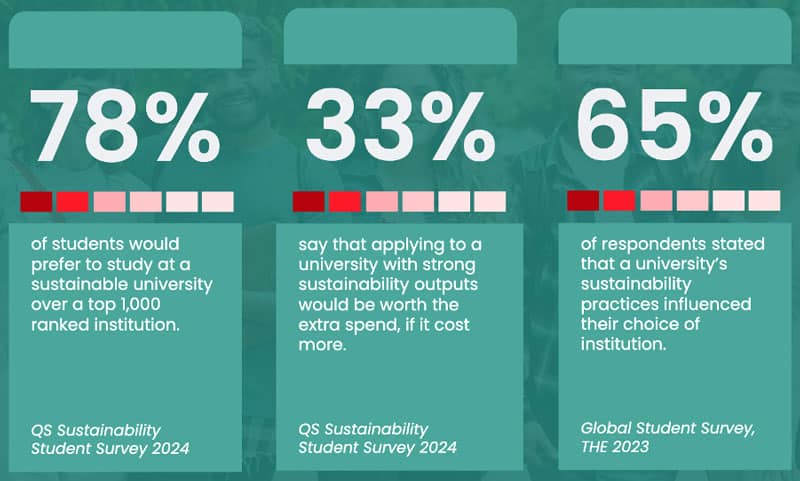
The influence of UN Sustainable Development Goals
Of the 17 Sustainable Development Goals (SDGs) that all 193 United Nations member states agreed to in 2015 – with a target of these goals being met by 2030 – several specifically reference education and research, which is understandable given schools and universities’ role in educating youth for contemporary challenges. SDGs are increasingly being woven into K-12 and higher education curricula in many countries, and a large proportion of students are therefore familiar with the importance of the SDGs while deciding:
- Which destination to study in
- Which institutions to apply to
- Which programmes to consider
From the institutional side, working towards sustainability is complex – even when grounded in the best intentions. As the CAB report notes, international education is not easy on the environment. Collectively, international education at the 22 institutions and pathway providers in the 2024 study generated nearly 700,000 tCO2-e (tonnes of carbon dioxide equivalent) with the largest share of that carbon footprint – roughly 83% of the total – stemming from student travel abroad.
Institutions truly committed to SDGs often find other ways to contribute to sustainability efforts (e.g., through academic departments and programmes, through campus initiatives, and through careful consideration of in-person travel vs. digital alternatives).
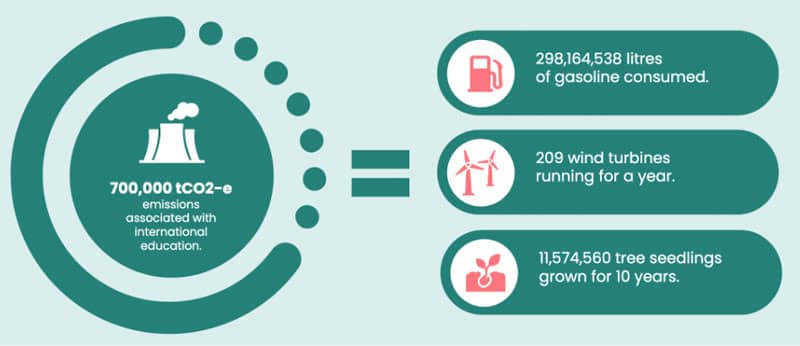
In general, the CAB study found that most institutions in the sample are very committed to climate action. However, performance was weaker when it came to emissions reduction initiatives and staff involvement in sustainability efforts. Just under half of international staff are “somewhat” responsible for climate change action initiatives at their university, while a third are “moderately” responsible. Only 19% are “mostly responsible.”
As you can see from the chart below, barriers to staff action towards sustainability efforts include limited resources, lack of set targets, lack of clear metrics, and uncertainty regarding who is responsible.
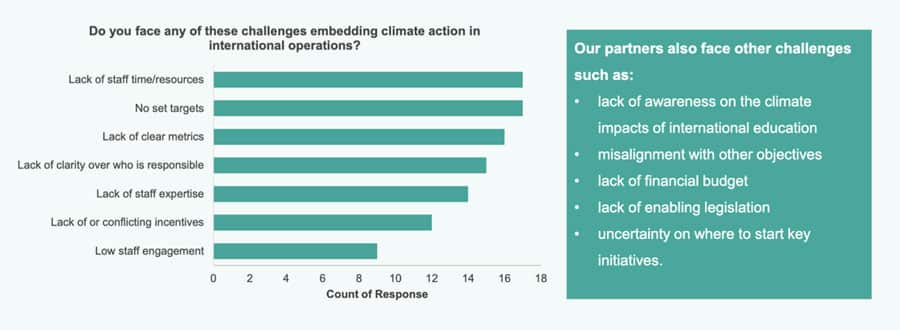
Innovative ways of reducing staff travel
Given that in-person overseas marketing is one of the major ways in which international educators contribute to global warming, it is important for institutions to look for ways to reduce emissions in this area. The CAB survey reveals a trend of institutions merging the goals of overseas activities and using in-market representatives to reduce the amount of staff travel. More than half (59%) are leveraging faculty members’ visits to include recruitment efforts, 45% are leveraging alumni in local markets, and 32% are using their own students who are studying abroad.
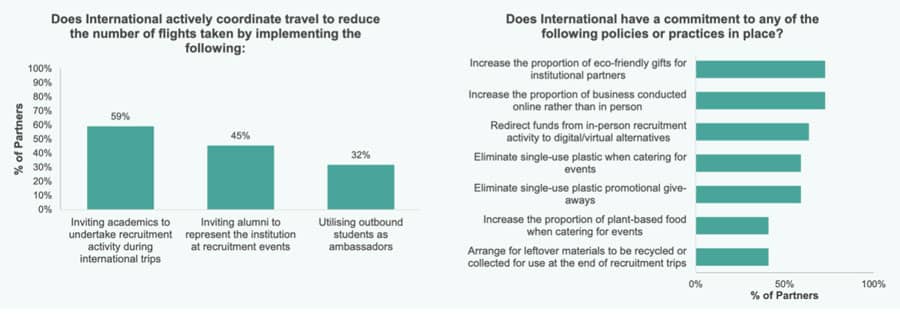
Effects of global warming widely anticipated across the sample
Nearly two-thirds of institutions expect that their operations will be significantly impacted by climate change by 2030. Even now, Australian universities are reporting serious weather-related implications for their home campuses, as shown in the chart below.
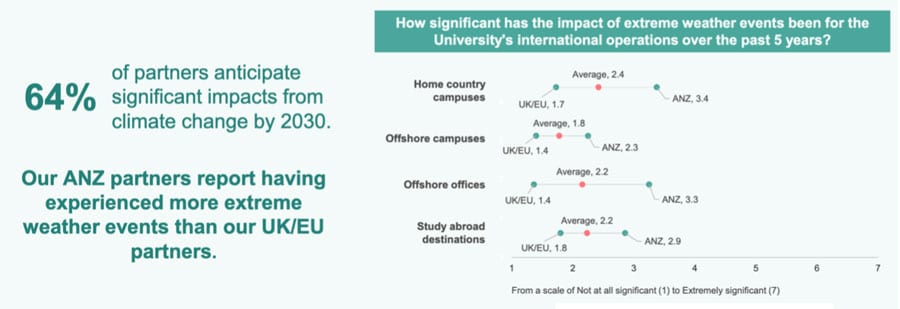
Leaders in sustainability efforts
Stepping for a moment outside of the CAB findings, other sources indicate that Europe, and some European institutions in particular, have developed a competitive advantage with respect to sustainability. According to the UN’s Sustainable Development Report, the top ten countries for progress made towards the 17 SDGs are:
- Finland
- Sweden
- Denmark
- Germany
- France
- Austria
- Norway
- Croatia
- UK
- Poland
At the institutional level, of the Top 100 universities in QS’s global sustainability rankings for 2025, nearly half are in Europe. This includes twenty-six in the UK, six in Germany, four in Sweden, three in France, two in Switzerland, two in The Netherlands, two in Belgium, and one each in Ireland and Spain.
The full list of top-ranked universities for sustainability, according to QS, is here. For those universities, sustainability is a compelling advantage. IESG Chief Executive Ailsa Lamont says:
“Universities have a powerful opportunity to lead the education sector's response to climate change. By embedding sustainability into strategy, operations and leadership, institutions can build resilience, align with student and stakeholder expectations and strengthen their global reputation.”
For additional information, please see:
















